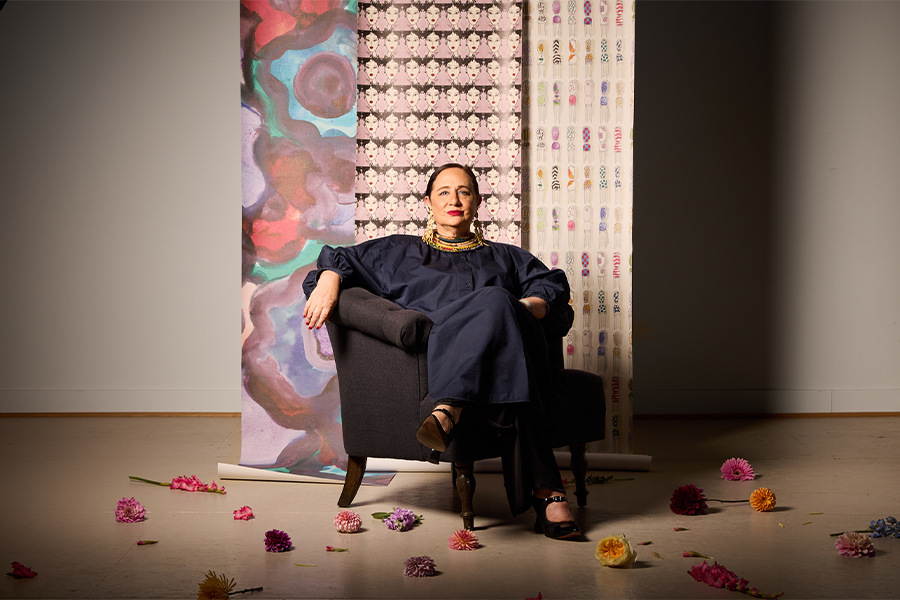Bunkhouse Group first caught the attention of Amar Lalvani, Standard International executive chairman, as a customer when he and his wife frequently visited the Hotel St. Cecilia in Austin and were drawn to its culture and aesthetic. “[It was] genius,” Lavani points out. “The limited service model was turned on its head, but it’s so high touch and culturally relevant that it doesn’t even belong in that category.”
Founded by hotelier Liz Lambert in 2006 (she has since left and formed Lambert McGuire Design with restaurateur Larry McGuire and joined his company with Tom Moorman, now renamed McGuire Moorman Lambert Hospitality), Bunkhouse is renowned for its small, quirky hotels found throughout Texas and beyond. Today, that portfolio includes such properties as Hotel Magdalena, Austin Motel, and Hotel San José in Austin; Hotel Havana in San Antonio, Texas; El Cosmico in Marfa, Texas; Hotel San Cristóbal in Baja, Mexico; and the Phoenix Hotel in San Francisco.
“I knew Bunkhouse had ambitions to grow and to do things outside of Texas to make a mark in the business,” Lalvani says, adding that he became friends with Lambert and had a great respect for what she had created. “We invested in Bunkhouse in 2014 and took a 20 percent stake. The relationship was working very well, and they asked us to take a 51 percent stake [in 2015]. Since then, we’ve been building Bunkhouse.” Indeed, this partnership signaled a prime opportunity for Lalvani to significantly ramp up growth across the Bunkhouse portfolio.

Standard International executive chairman Amar Lalvani and Tenaya Hills, senior vice president of design and development at Bunkhouse Group
While his vision was to take Standard into major cities across the globe, Bunkhouse had the potential to be the most coveted spot in secondary markets throughout the U.S. Noting the rise of interesting hospitality projects in the likes of Detroit, New Orleans, and Portland, Oregon, Lalvani realized that, with Bunkhouse’s strong brand DNA, it could easily fit into those locations. “That was how I mapped out how Bunkhouse and Standard would fit together.” As with Standard Hotels, Lalvani believes his opportunistic mindset, one that embraces a “don’t be scared, let’s go for it, Bunkhouse, you are more special than you even know” philosophy, is also helping to bring this brand out of its comfort zone. “You can see that’s where we’re headed,” he adds.
Consider the arrival of Hotel Genevieve in Louisville, Kentucky next spring. The 122-room property is spearheaded by Memphis, Tennessee-based LLW Architects and Philadelphia’s Rohe Creative and will feature a Parisian-inspired rooftop bar and references to Kentucky quilting history. The project “allowed us to stretch and think about how we bring a sense of who we are to this type of site without leaning on the ways we’ve done so in the past,” says Bunkhouse Group’s Tenaya Hills, senior vice president of design and development. “We accomplished this by going heavy on the interiors. The public spaces feel very magical, and overall, the hotel feels layered, colorful, lush with greenery, and punctuated by vintage pieces, art, and music.”
Later in 2023, the 71-key Hotel Saint Augustine will open in Houston adjacent to the Menil Collection museum, flaunting a design by Brooklyn and Jackson, Wyoming-based Post Company and longtime collaborator Lake | Flato. Both hotels are the first to engage designers outside of Bunkhouse’s own studio. “We’re looking for partners who inherently understand what Bunkhouse is all about,” Hills explains. “We have 10 brands, but there is a throughline running through each Bunkhouse property. That, she adds, is “a design with depth, topped off with a layer of irreverence. We aim to tell a story that goes beyond color combinations or motifs. We like our design to have roots and history that’s singular to where you are. Otherwise, it feels flat.”

The Summer House on Music Lane restaurant in Hotel Magdalena features two-tone green dining chairs
Hills has been with Bunkhouse Group since 2008 and is instrumental to its vision. “It’s really seamless,” Lalvani explains of their working relationship. “I trust her completely on the design parts.” The mission now is the same as it was then: “to create projects we love, that we are passionate about, and that give to their location,” Hills says.
Although Bunkhouse has a soft spot for transforming motels and mansions, Hills also points out that “we are also simply interested in places we want to be,” leading to alliances with developers and architects on new builds. Bunkhouse likes to jump in from the very beginning, studying the market and determining room count, square footage, and amenities before putting together its narrative and design concept decks. “We really like to dig in,” Hills says. “We read books, visit the city or site, and talk to people.”
Hills is now immersed in two recent takeovers. At the Carpenter Hotel in Austin’s Zilker neighborhood, renovated public spaces and guestrooms are underway, and soon a swim club will debut. At the Shady Villa Hotel in Salado, a small town near Austin, the 1950s motel was revamped to recall a summer camp of yore; now, a new pool area and outdoor limestone pavilion will be part of the mix.
“Amar thinks big, and Standard runs bigger hotels than we do, so we have learned a ton from them. Their operations, F&B, and business development teams have taught us invaluable lessons on how to scale,” Hills explains. “In many ways they are our parent company, but it feels like partnership and support. It does not at all feel corporate—they are individual people who care about us.”
This article originally appeared in HD’s August 2022 issue.


